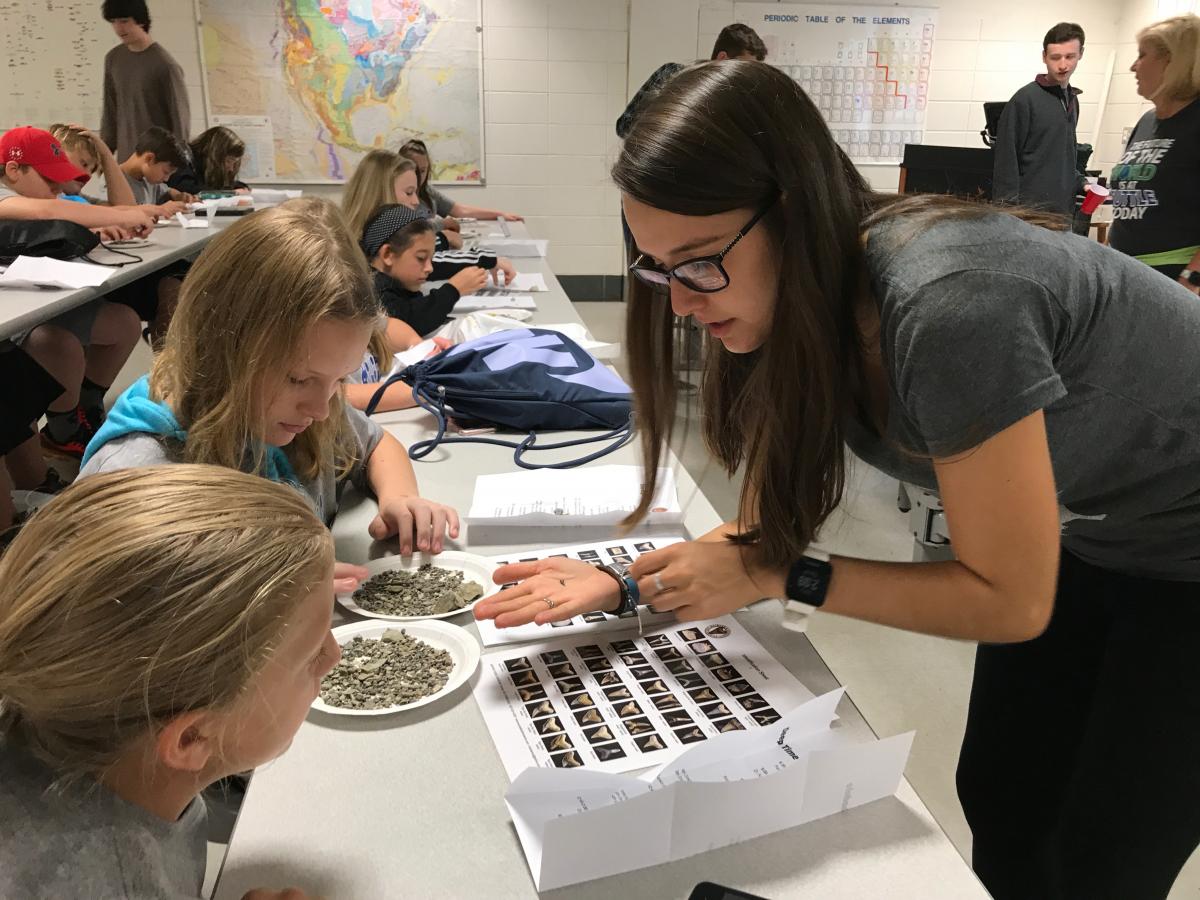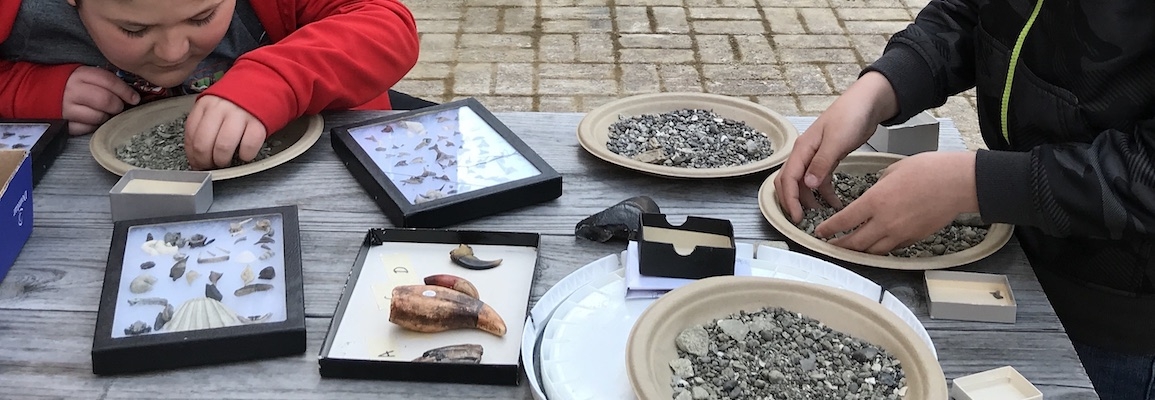In the "Clues in Fossils" program, students dig deeper into the world of fossils and how they provide evidence for the history of life on Earth. Our resources are all free to use thanks to the Department of Geological and Environmental Sciences at Appalachian State University. If you have questions about any of these resources, field trip opportunities or classroom visits please contact our Outreach Coordinator at mckinneymuseum@appstate.edu. If you would like to borrow fossil samples for your classroom, check out our Loaner Kits.
Resources
History of the Earth K-W-L Chart
This is a great starter activity for the topic and useful as a formative assessment tool at the beginning, middle and end of unit.
Felt Ruler Deep Time Activity
This activity is similar to others using toilet paper, ticker tape or clothes lines to demonstrate geologic tape, but instead uses a yard stick and felt. Students position small images of animals and plants using velcro along the "timeline". This is not just a demo, it's interactive as each group of students carries out the activity themselves, and the activity serves as a great formative assessment tool.
- Felt Ruler Geologic Timescale (Teacher instructions and student handout)
- Geologic Timeline Cheat Sheet for Teachers
Fossil-ize Me! Manipulative
A concept sorting activity for students to practice their understanding of the different types of fossil there are based on method of formation. Print and laminate the activity for best results!
"What's Your Type?" Handout
Word problems describing a fossil and how it was formed, students need to figure out which of the 6 types of fossils (cast, mold, carbonized, petrified, preserved or trace) best matches the description. Goes well as a follow-up activity to the Fossil-ize Me! Manipulative.
Aurora Sediment Resources
- Aurora Sediment Fossil Record Sheet: This is the data sheet we use with the Aurora phosphate sediment. Students sort through the sediment and group the different types of fossils they find. They draw them in and determine what they think the fossils are, before looking at the ID sheet.
- Aurora Sediment ID Sheet: This is a resource available through the Aurora Fossil Museum containing pictures and identification information of the most common fossils found in the Aurora phosphate mine sediment.
- Aurora Sediment Questions: Student sheet with information about the origin of the Aurora phosphate sediment which includes comprehension questions
Fossil Challenge
Challenge your students to create their own fossils at home. Guidelines are included in this document. They need to recreate as realistically as possible one of the methods of fossil formation. Send us photos of their fossils or upload them to the Fossil Showcase padlet.
Looking for Clues Crossword Puzzle
A great review tool, or use as formative assessment at any point in the history of the Earth unit.
AppState Geo-Researcher Spotlights
Check out some of the research our geologists at AppState are doing:
- Dr. Heckert: A Rare Discovery in North Carolina
- Dr. Hageman: Tiny Fossil Solves 124 Year Old Mystery
- Dr. Liutkus-Pierce: Ancient Human Footprints Found in Volcanic Ash

Annie the undergrad with Annie the Ammonite

Students sort through Aurora sediment.
Standard Alignment:
- NCSES 8.E.2 Understand the history of Earth and its life forms based on evidence of change recorded in fossil records and landforms.
- 8.E.2.1 Infer the age of Earth and relative age of rocks and fossils from index fossils and ordering of rock layers (relative dating and radioactive dating).
- 8.E.2.2 Explain the use of fossils, ice cores, composition of sedimentary rocks, faults, and igneous rock formations found in rock layers as evidence of the history of the Earth and its changing life forms.
- NCSES 8.L.4 Understand the evolution of organisms and landforms based on evidence, theories and processes that impact the Earth over time.
- 8.L.4.1 Summarize the use of evidence drawn from geology, fossils, and comparative anatomy to form the basis for biological classification systems and the theory of evolution.
Other tips for teachers:
- Want to borrow some fossils? Check out the loaner kits we have available for free.
- If you are intested in visiting our geology facilities or having a guest speaker in your class, please contact us at mckinneymusem@appstate.edu
